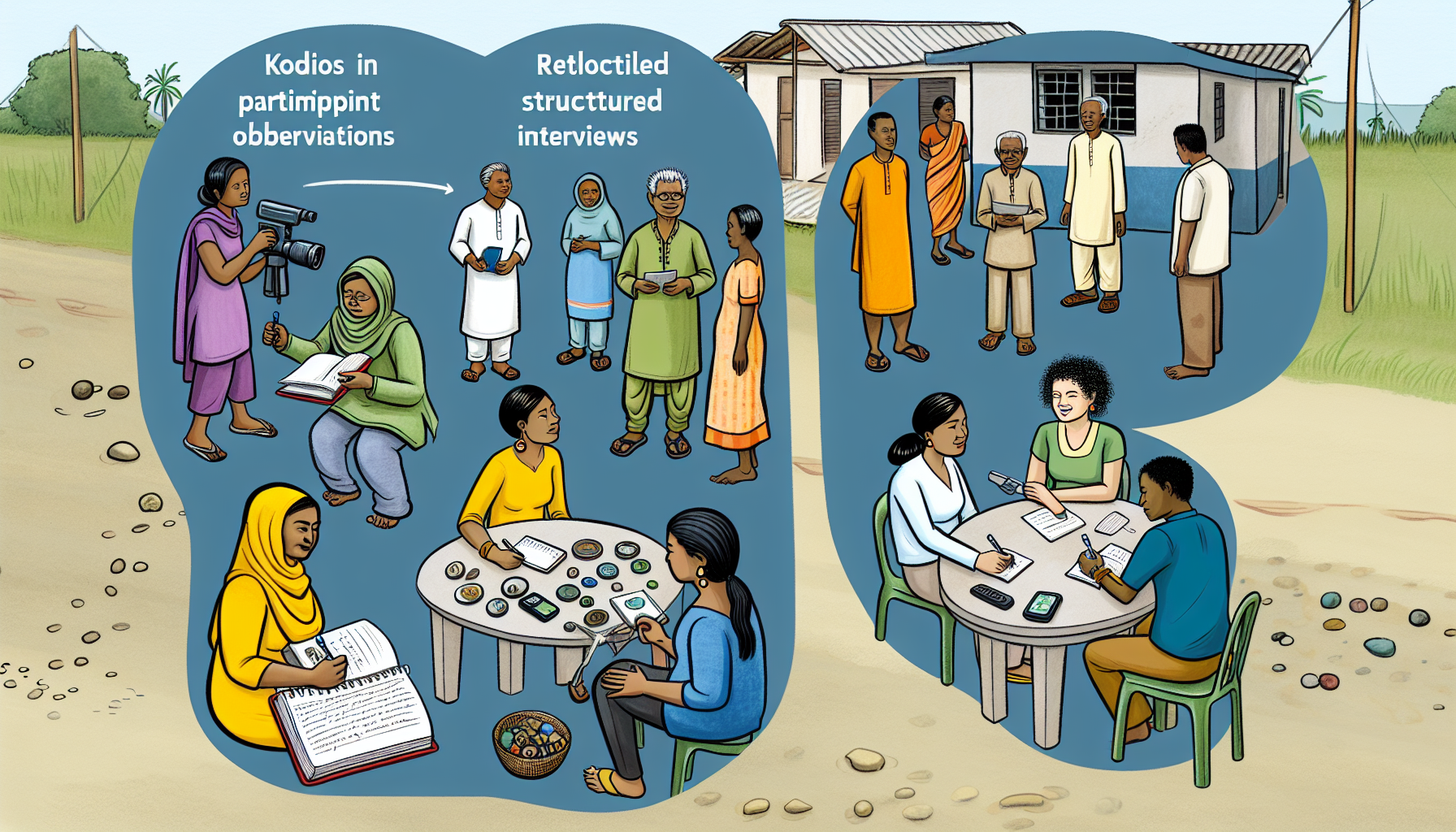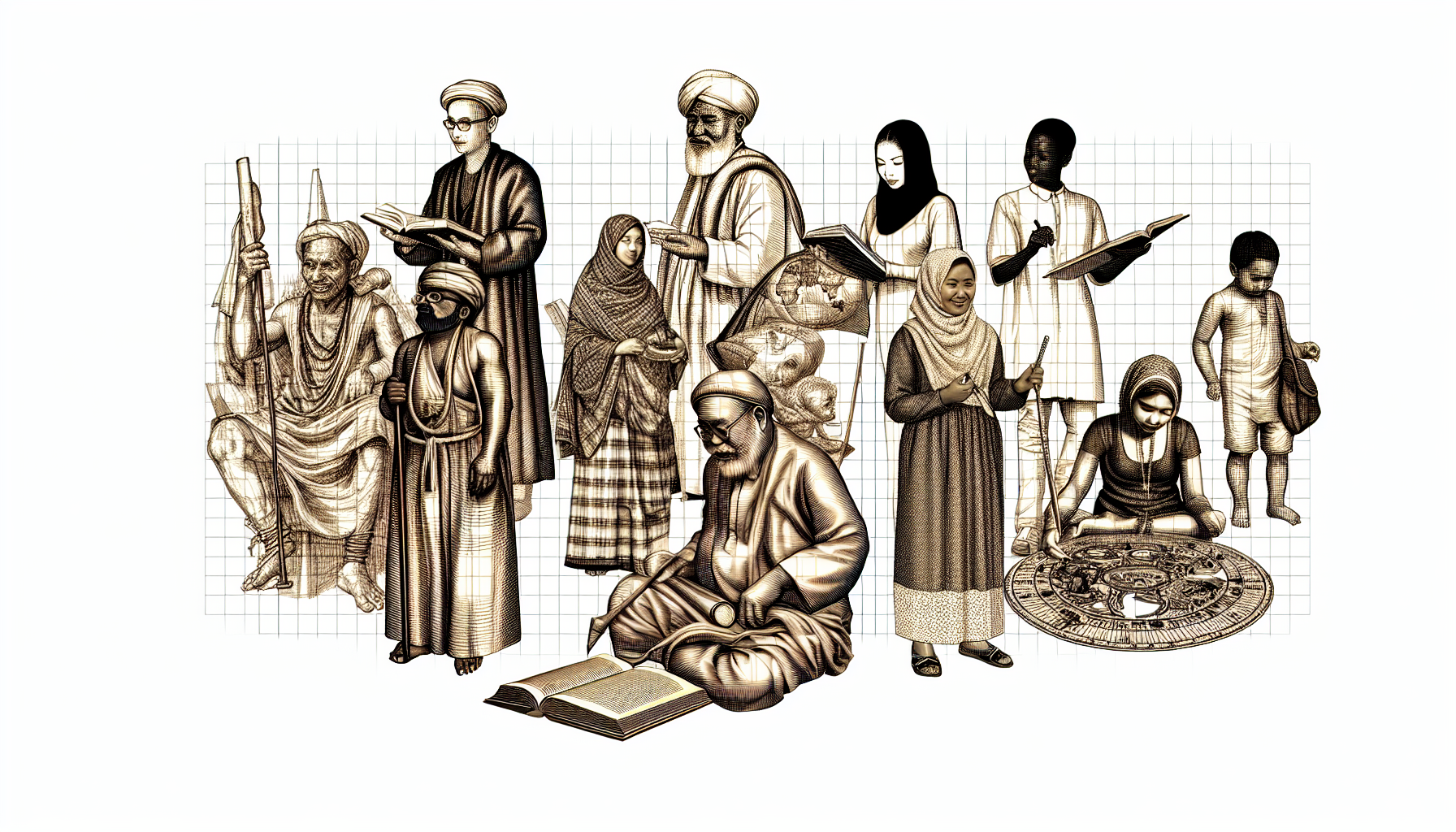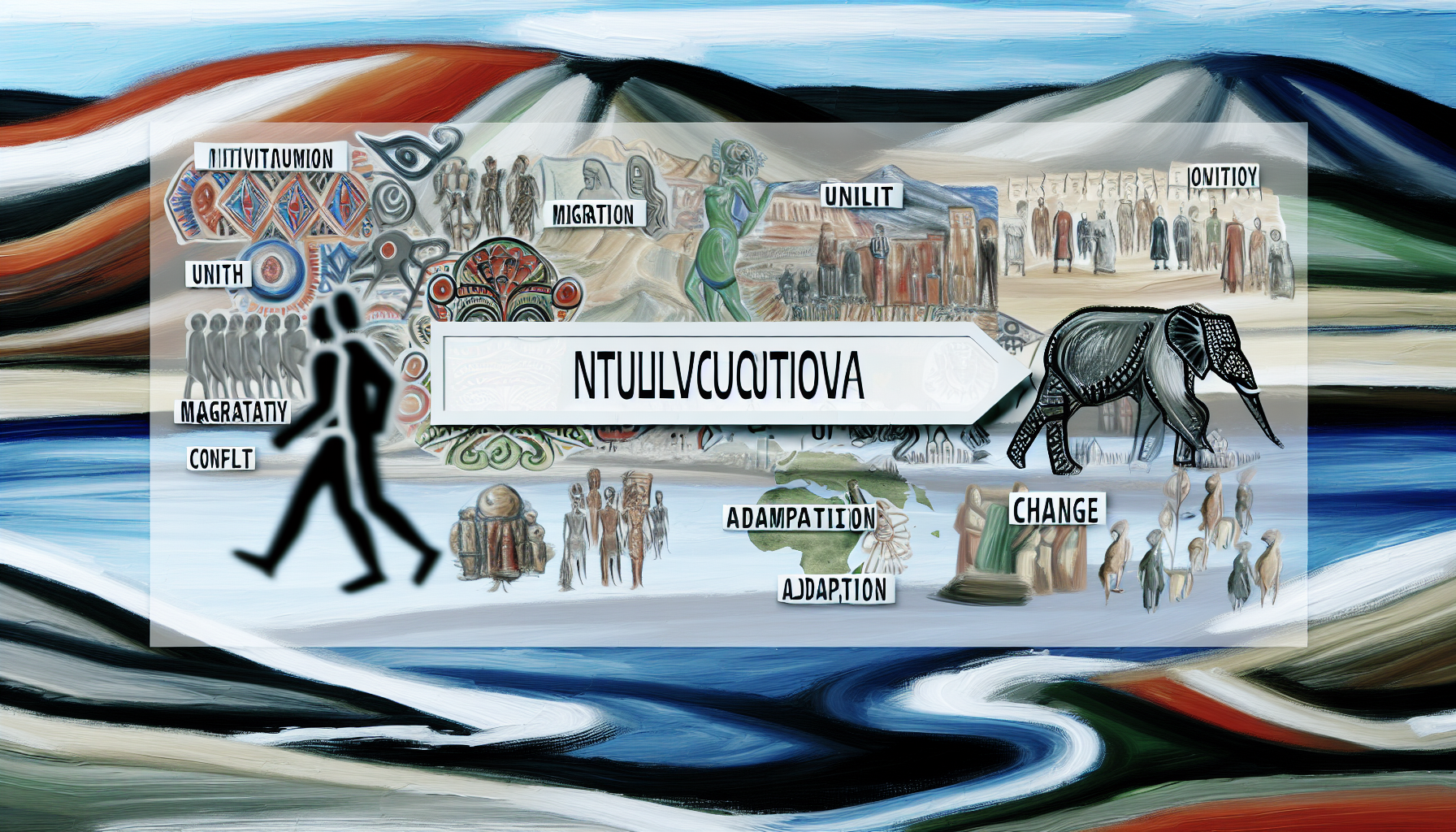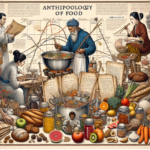
Cultural anthropology is a vital branch of anthropology that focuses on the study of cultural variation among humans.
It investigates the intricate tapestry of human societies, exploring their beliefs, practices, norms, and values. This field plays an essential role in understanding not just who we are as individuals, but also how we function collectively as part of communities. Cultural anthropologists analyze the way culture influences behavior, which can illuminate the vast diversity of human experiences across different contexts.
The roots of cultural anthropology can be traced back to the late 19th century when scholars began to systematically study human cultures. Early anthropologists sought to document and categorize diverse cultures, often through a colonial lens, which has led to critiques regarding their methodologies and ethical considerations. Over the years, cultural anthropology has evolved, adopting more reflexive approaches that prioritize the perspectives of the cultures being studied. As a result, modern cultural anthropology emphasizes participant observation and immersive fieldwork, allowing anthropologists to build deeper connections with communities and gain insights into the lived experiences of people.
Key concepts in cultural anthropology include culture, symbols, social norms, rituals, and ethnicity. These concepts provide a framework for analyzing how culture shapes human behavior and social interactions. Cultural anthropologists also study cultural change and continuity, examining how societies adapt to global influences while preserving their unique traditions. This discipline is intrinsically linked to other areas of anthropology, such as biological and archaeological anthropology, as well as the broader social sciences like sociology and psychology, enriching our understanding of humanity from multiple perspectives.
In essence, cultural anthropology serves as a crucial lens through which we can explore and appreciate the vast variety of human societies and the complex ways in which culture influences lives. Through this exploration, we can foster greater empathy and understanding among diverse populations, recognizing the shared humanity that binds us all.
Cultural anthropology, a vital subfield of anthropology, is predicated on several core principles that shape its study and research methodologies. One of the fundamental tenets is cultural relativism, which posits that a culture should be understood on its own terms without imposing external judgments. This principle encourages researchers to appreciate and analyze cultural practices and beliefs within their contextual framework, promoting an understanding that varies significantly from one society to another. For example, the practice of arranged marriages may seem foreign to individuals from individualistic societies, yet it is an accepted tradition in various collectivist cultures where familial bonds are prioritized.
In contrast, ethnocentrism refers to the tendency to evaluate other cultures based on the standards and norms of one’s own culture. This perspective can lead to misinterpretations and biases in anthropological studies if not approached with caution. Cultural anthropologists must consciously avoid ethnocentric views to achieve a more accurate understanding of cultural diversity. A classic case is the Western viewpoint on communal living, which may be perceived as primitive, whereas, within certain cultures, it represents solidarity and interdependence, reflecting the values held by those societies.
Another pivotal principle in cultural anthropology is participant observation, which involves immersive engagement with the community being studied. This method allows anthropologists to gather firsthand experiences and insights, leading to richer, deeper understandings of social dynamics and cultural practices. For instance, an anthropologist studying the rituals of a remote tribe might live among its members, participating in daily activities to gain trust and a comprehensive perspective. Fieldwork, intertwining aspects of both cultural relativism and participant observation, is critical in corroborating findings and ensuring the integrity of the research process.

Research methods in cultural anthropology encompass various qualitative approaches that allow researchers to gain in-depth insights into human societies and cultures. These techniques are essential for understanding the complexities and nuances of cultural practices and beliefs. One prominent method is ethnography, which involves immersive observation and participation in the daily lives of a community. By spending extended periods within a culture, anthropologists can gather rich, contextual data that reveals the lived experiences of individuals.
Interviews also play a vital role in cultural anthropological research. Conducting semi-structured interviews enables researchers to explore specific themes while allowing flexibility to delve deeper into respondents’ perspectives. Open-ended questions can foster a conversational atmosphere, encouraging participants to elaborate on their thoughts and experiences. When designing surveys, researchers should ensure that questions are culturally sensitive and relevant to the demographic group under study. Surveys can help gather quantifiable data, complementing qualitative findings from interviews and ethnographic work.
Case studies provide another valuable framework for cultural anthropologists, focusing on particular instances or phenomena within a culture. This method allows for an in-depth exploration of specific events or practices, shedding light on broader cultural patterns. However, researchers must be vigilant about ethical considerations throughout their research process. Informed consent, confidentiality, and respect for the dignity of participants are fundamental principles that guide responsible research practices. Additionally, researchers should remain reflexive about their positionality and potential biases, as these can shape the interpretation of cultural data.
In summary, employing diverse qualitative methods such as ethnography, interviews, surveys, and case studies is crucial for effective cultural anthropology research. By adhering to ethical guidelines and being mindful of research design, anthropologists can enrich their understanding of human cultures while maintaining integrity in their research endeavors.
Cultural traditions and practices are vital components of the human experience, serving not only to define individual identities but also to shape communities worldwide. Across various regions and cultures, we can observe a multitude of customs that reflect the unique history, values, and beliefs of the people. For instance, in Indigenous cultures of North America, rituals and storytelling play a critical role in maintaining a connection to ancestry and the land. These customs help to foster a sense of belonging and purpose within communities, emphasizing the importance of cultural continuity.
In contrast, countries in East Asia celebrate the Lunar New Year with vibrant festivities that involve family reunions, symbolic foods, and traditional performances. Such practices reinforce familial bonds while simultaneously celebrating cultural identity. Similarly, in many African societies, communal celebrations such as harvest festivals or rites of passage bring together members of the community, reinforcing social cohesion and collective identity. These traditions highlight how cultural practices can influence individual behavior and social connections, illustrating the deep-rooted sense of unity among community members.
Furthermore, the rise of globalization poses both challenges and opportunities for the preservation of cultural heritage. As diverse cultures intermingle, there exists a risk of cultural homogenization, where unique traditions may be overshadowed by dominant global influences. However, globalization can also facilitate cultural exchange and appreciation. Initiatives aimed at documenting and reviving endangered traditions demonstrate the commitment of various communities to maintain their cultural identity. By valuing and protecting these practices, societies can ensure that future generations continue to benefit from their rich cultural histories and diversity.
In conclusion, understanding cultural traditions and practices around the globe underscores their significance in fostering identity and community. As we navigate the complexities of a rapidly changing world, preserving these rich heritages remains essential to ensuring a diverse and culturally vibrant future.
Language serves as a vital conduit for cultural expression, allowing individuals and communities to convey their beliefs, values, and traditions. Through language, cultural narratives are formed and passed down through generations, ensuring the continuity of cultural heritage. This dynamic interplay between language and culture highlights the significance of linguistic diversity as a reflection of human experience. Each language embodies unique ways of thinking, interpreting the world, and expressing emotions, thereby enhancing the richness of human cultures.
The transmission of traditions is heavily reliant on language, as it is through storytelling, rituals, and everyday communication that knowledge is disseminated. Language provides the framework to understand historical contexts and shared experiences, enabling individuals to connect with their cultural roots. Moreover, social interaction is facilitated through language, fostering community bonds and enabling collaborative practices that define cultural identity. Without language, the nuances and subtleties that shape a culture could be lost, creating a gap in understanding and appreciation of diverse ways of life.
However, the phenomenon of language loss poses a significant threat to cultural identity. As languages diminish, the unique perspectives and specific knowledge encapsulated within them are also at risk of disappearing. This loss can lead to a homogenization of cultures, where distinct traditions and practices are sidelined in favor of more dominant languages. Consequently, preserving linguistic diversity is imperative not just for communication, but also for maintaining the rich diversity of human cultures. Efforts to revitalize endangered languages and promote multilingualism are essential steps toward safeguarding cultural heritage in a rapidly globalizing world.
Cultural change is an inherent aspect of human societies, often driven by various factors such as technological advancements, migration, and contact with different cultures. In the contemporary context, globalization has emerged as a significant force influencing cultural dynamics worldwide. It refers to the interconnectedness of local, national, and global cultures, creating a complex tapestry of interactions that can lead to both cultural homogenization and distinct transformations.
One of the central challenges posed by globalization is the potential erosion of local cultures. As global media and market forces promote a dominant set of values and consumer behaviors, many smaller or indigenous cultures face the risk of losing their unique traditions, languages, and practices. For instance, the proliferation of Western pop culture through films, music, and fashion has significantly impacted cultural expressions across diverse societies, leading to concerns over cultural imperialism. The effects of such homogenization can be profound, often resulting in the marginalization of local narratives in favor of global ones.
However, globalization also offers opportunities for cultural exchange and revival. It facilitates the dissemination of ideas, practices, and innovations that can enrich local practices. For example, the rise of social media platforms has enabled indigenous groups to share their cultures with a broader audience, fostering appreciation and potentially countering cultural decline. Case studies reveal that many cultures adapt aspects of global cultures while maintaining their unique identity. The Japanese phenomenon of “kawaii” culture blends traditional values with contemporary aesthetics, showcasing how cultural change can be a dynamic process of adaptation rather than mere loss.
In essence, while globalization presents significant challenges to the preservation of local cultures, it simultaneously provides opportunities for cultural adaptation and exchange, creating a dynamic interplay that continuously shapes the human experience. Understanding these complexities is crucial for fostering dialogues that respect and celebrate cultural diversity in an increasingly interconnected world.

For individuals interested in delving into the realm of cultural anthropology, several actionable insights can foster a deeper understanding of diverse human societies. A critical starting point is the exploration of essential resources, including foundational texts that have shaped the discipline. Books such as “Cultural Anthropology” by Barbara Miller and “The Interpretation of Cultures” by Clifford Geertz offer pivotal perspectives on cultural analysis and ethnographic methods. These texts help elucidate the complexities of cultural practices and beliefs, forming a solid groundwork for budding anthropologists.
In addition to traditional literature, various academic publications present contemporary issues and findings in cultural anthropology. Journals like “Cultural Anthropology” and “American Anthropologist” regularly feature articles by leading scholars, providing insight into ongoing debates and research methodologies. Subscribing to these journals or accessing them through academic institutions can keep students abreast of the latest developments in the field.
Online platforms serve as vital resources for aspiring anthropologists to connect with established communities. Websites such as the American Anthropological Association (AAA) offer forums, webinars, and networking opportunities that facilitate engagement with professionals in the field. Additionally, social media platforms like Twitter and LinkedIn host numerous groups and hashtags dedicated to cultural anthropology discussions, allowing individuals to participate in conversations and share perspectives effectively.
Fieldwork experiences and internships greatly enhance the study of cultural anthropology, providing a practical framework for learners. Many universities offer field study programs that allow students to immerse themselves in various cultures. Engaging in volunteer opportunities with cultural organizations or participating in anthropological field schools can also provide invaluable hands-on experience. These experiences enable students to apply theoretical knowledge and gain insight into the lived realities of other cultures, which is crucial for a comprehensive understanding of cultural anthropology.
Cultural sensitivity plays a pivotal role in fostering respectful interactions among diverse communities. In our increasingly globalized world, where people from various cultural backgrounds come into contact more frequently, understanding and valuing cultural differences becomes essential. Engaging with different cultures through the lens of cultural sensitivity allows individuals to build meaningful relationships and bridge gaps between disparate communities.
One of the significant aspects of cultural sensitivity is the recognition that each culture has its own set of values, beliefs, and practices that shape its way of life. When individuals approach other cultures with a respectful attitude and an open mind, they are more likely to avoid misunderstandings and miscommunications. It is crucial to listen actively and observe the cultural nuances inherent in social interactions to appreciate diverse perspectives better.
Cultural ignorance often leads to stereotypes and assumptions that can exacerbate tensions between groups. To counteract this, it is important to educate oneself about the traditions, customs, and historical contexts of other cultures. This education can be achieved through various means, such as reading, attending cultural events, and participating in community discussions. Such initiatives not only enhance one’s understanding but also demonstrate a commitment to mutual respect and cooperation.
Moreover, practicing cultural sensitivity involves recognizing one’s own cultural biases and being willing to adapt behaviors and language in cross-cultural situations. This adaptability fosters an inclusive environment where individuals feel valued and understood, which is fundamental in building interpersonal and communal relationships. By demonstrating respect and sensitivity toward other cultures, societies can work towards greater harmony and collaboration, ultimately enriching the shared human experience.

Through our exploration of cultural anthropology, it is clear that this field is vital for understanding the myriad ways in which human societies function and thrive. The rich tapestry of human cultures offers invaluable insights into our shared identities, traditions, and values. By studying the behaviors, beliefs, and social structures of various cultures, researchers can uncover the complexities of human interaction and the influences of history, geography, and environment on cultural development.
Cultural anthropology not only fosters appreciation for the diversity of human experiences but also highlights the similarities that unite us as a global community. As we reflect on the key points addressed throughout this blog post, we recognize the importance of engaging with different cultures to promote respect and understanding. The continuous intermingling of diverse populations emphasizes the need for cultural anthropologists to analyze and interpret the ever-evolving global landscape.
Moreover, the role of cultural anthropology transcends academic inquiry; it has practical implications for addressing contemporary social issues, from inequality and discrimination to cultural preservation and sustainability. Encouraging individuals to examine their own cultural backgrounds while remaining open to learning from others can cultivate a more inclusive and harmonious society. By embracing our shared humanity, we can navigate the challenges of globalization and foster cooperative relationships across cultural boundaries.
As we move forward, it is imperative for both scholars and the general public to continue exploring cultural anthropology’s contributions to society. Engaging in dialogues and exchanges with diverse cultures can broaden perspectives and help build a future that honors both our differences and our commonalities. In conclusion, the path ahead in cultural anthropology lies in a commitment to understanding and appreciating the full spectrum of human cultures. This endeavor is essential for a more interconnected and empathetic world.
Looking to advertise, promote your brand, or explore partnership opportunities?
Reach out to us at
[email protected]








Chose where you want to study, and we will let you know with more updates.